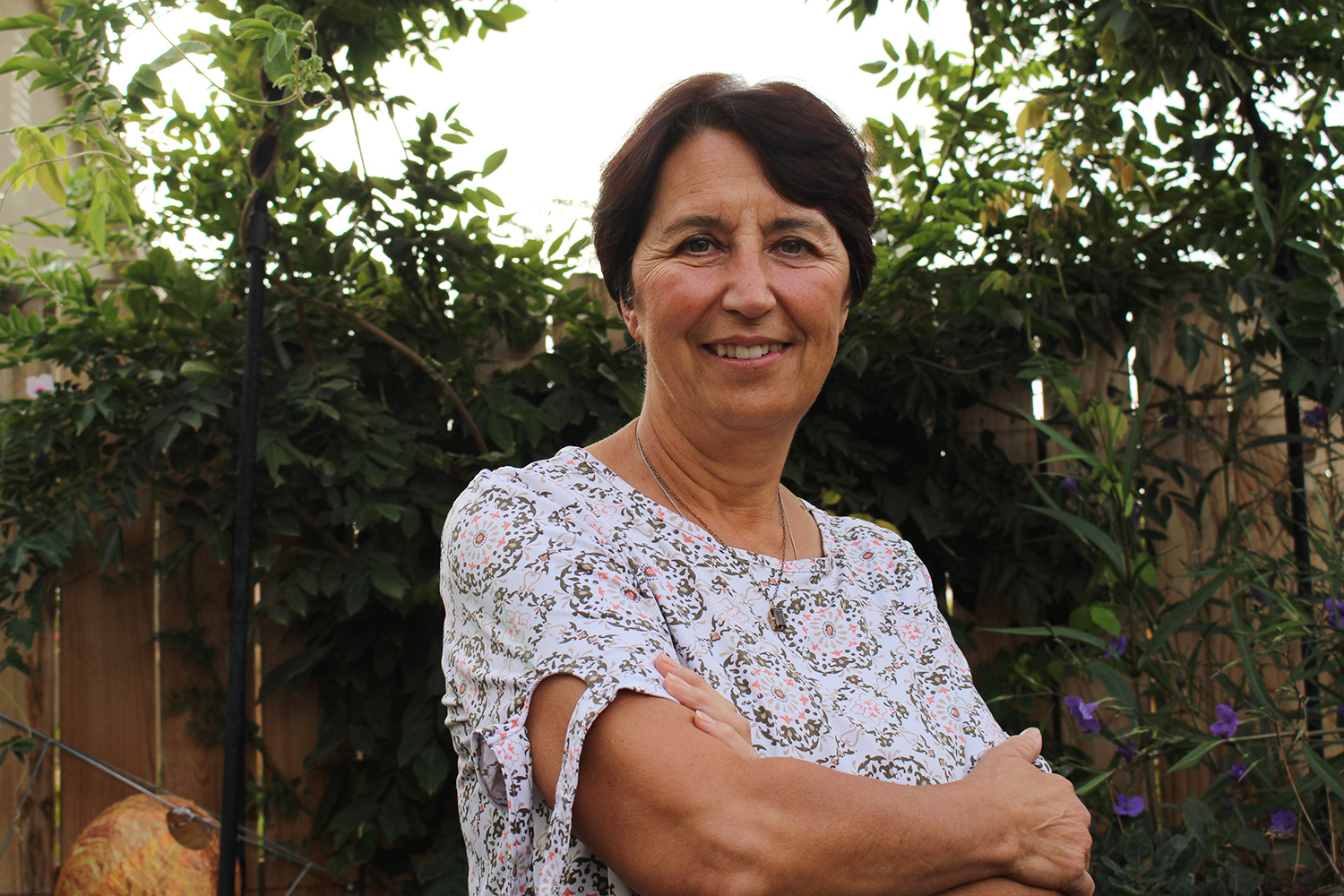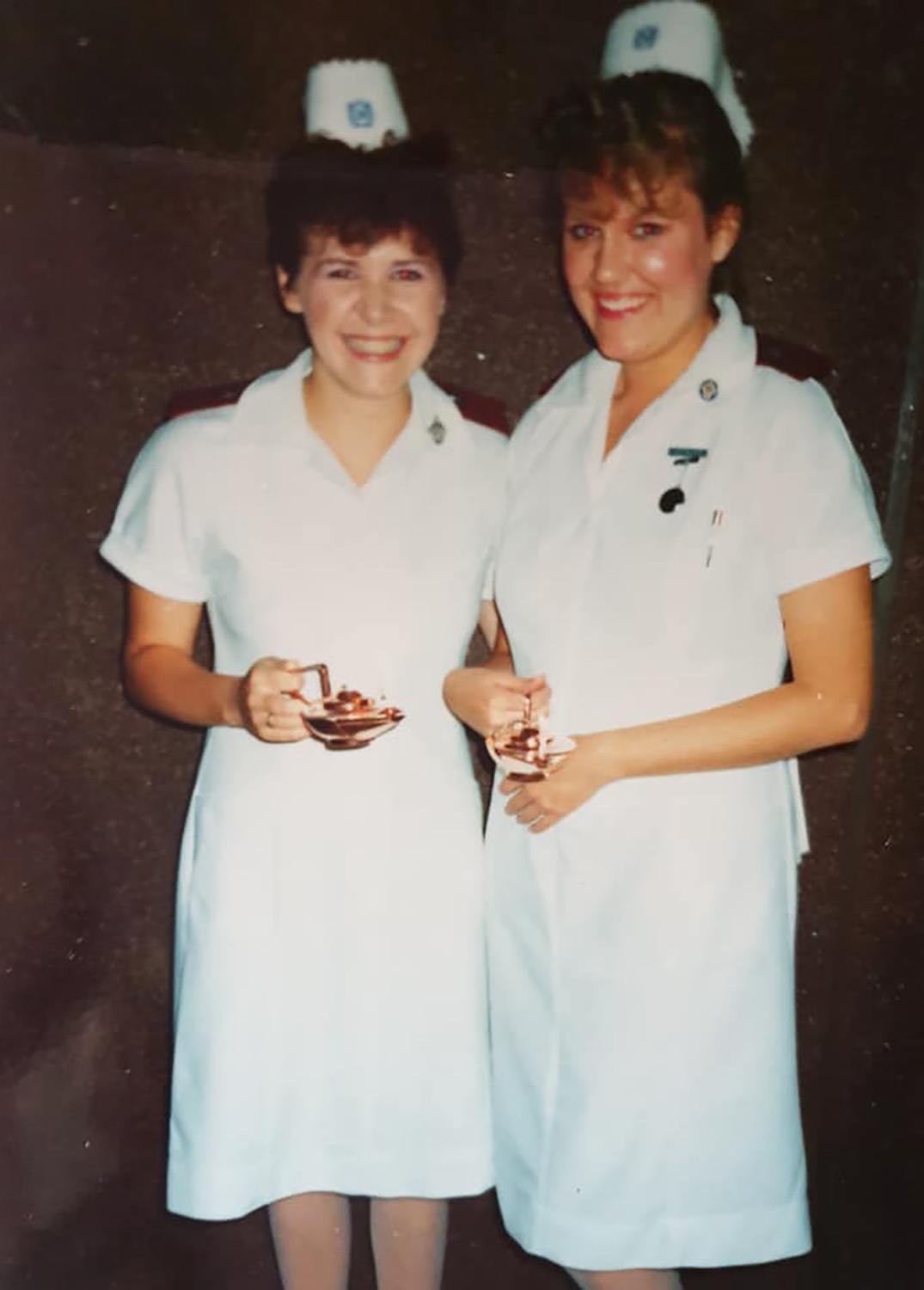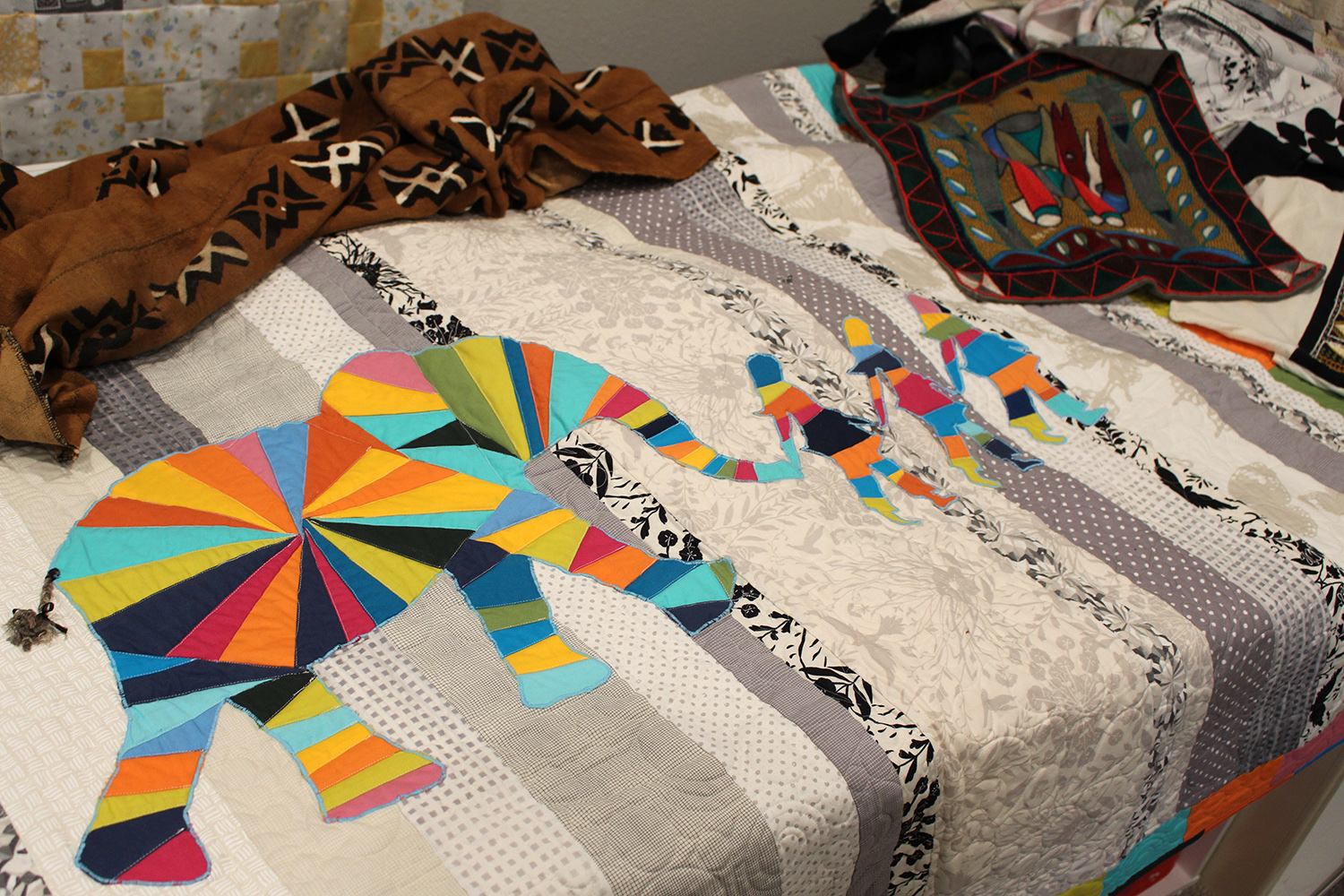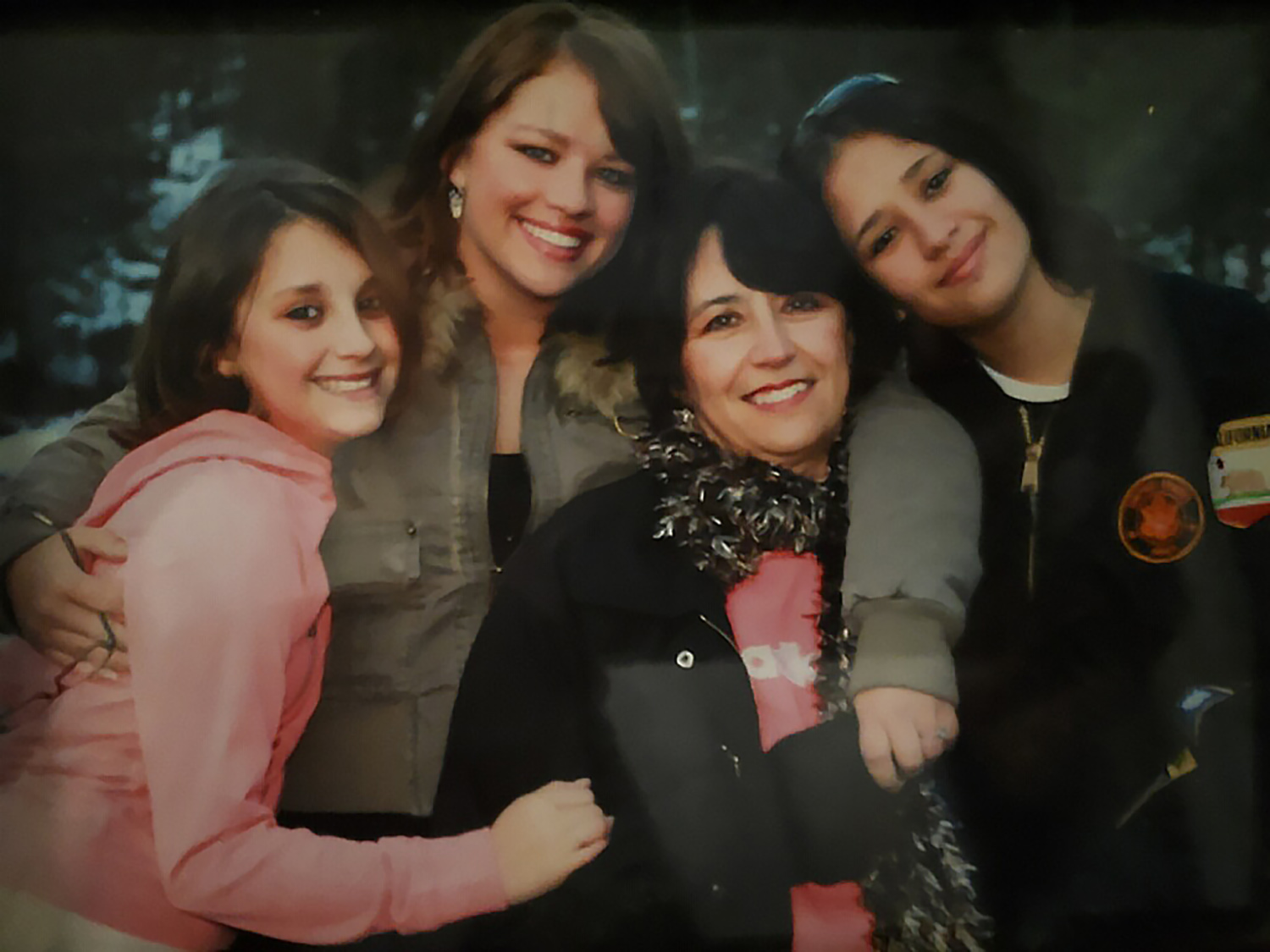
What does it mean to be an American?
We are finding, coaching and training public media’s next generation. This #nprnextgenradio project is created in Sacramento, Calif., where four talented reporters are participating in a week-long state-of-the-art training program.
In this project we are speaking to people from various walks of life—whether they are Indigenous, native born, a naturalized citizen, a refugee or an immigrant without legal status—to ask what it means to be an American.
Rina Steyn is from South Africa and with her family, moved to the Central Valley 20 years ago to continue her nursing career. Leaving her home meant leaving loved ones behind. Jannah Geraldo reports on what it meant for Steyn to become an American.
Illustration by Eejoon Choi
From South Africa to America: Pursuing opportunity and raising family in a new country
With only six suitcases and $6,000, Rina Steyn, her husband and three daughters moved to the United States in 2001.
“I think for us, it was the opportunity. They were recruiting big-time nurses in South Africa at the time,” said Steyn. “Me and my husband with three girls decided that we [were] going to come and check it out and see if it’s something that can work.”
Leaving South Africa worried Steyn. She was a nurse in Pretoria for many years before moving to America at age 40.
“My first question was, ‘I’m not already too old to do this?’” she wondered.
International nurse staffing companies contact nurses abroad to bring them to the United States. The company O’Grady Peyton International recruited Steyn, and despite her doubts, she was greeted with support and encouragement.
Making Sacrifices for a Better Future

Rina Steyn poses for a portrait in her backyard at her home in Clovis, Calif. Steyn has lived in California’s Central Valley for over 20 years. (Photo by Jannah Geraldo)
Steyn lived in Merced for five months before moving to Fresno, where she now works in the neonatal intensive care unit (NICU) for Valley Children’s Hospital in Madera.
Steyn said she felt guilty seeing the disparities in healthcare between the different countries.
“In the beginning, it was really hard because I would come home and be so sad and tell my husband, ‘Oh my gosh, you will not believe. I am sure that we can provide five South African hospitals with supplies with the waste going on in American hospitals,’” she said.
Her husband, Charl, encouraged her and kept her spirits up, as she adapted to some cultural surprises. She continued her career, discovering a community of people who shared her experiences, and with whom she formed a new kind of family in the U.S.
“I realized that after years went by, that the people that I got closest to were people that went through the same process that I did,” said Steyn. “Like the people from the Philippines and there was a nurse from India, and maybe just their personal experience… made us feel closer.”
Coming to the United States posed many challenges to Steyn and her family.
The culture and language are different. South Africa used to be a British colony, and American English confused her daughters.
“When we first came here, my youngest actually was asking one day, ‘Why is nobody in America speaking English?’” Steyn laughed.
Upon moving to the U.S.Steyn discovered a passion for sewing and creating quilts as mementos of her culture for her daughters.
When in South Africa, Steyn said sewing clothes was a necessity. Clothes were often too expensive, and she made dresses, sweats and pajamas for her daughters.
Now, sewing is her hobby.

Fayanne Oelofse (left) and Rina Steyn (right) pose for a photo during their nursing candle lighting ceremony in 1970 at Pretoria University. The ceremony is held for graduating nursing students, representing the efforts of English nurse Florence Nightingale, who is regarded as the founder of modern nursing. (Photo courtesy of Rina Steyn)

The quilt Steyn sewed for her daughter Mia features a colorful elephant led by three girls, representing her daughters. More quilts and other fabrics with traditional South African patterns are kept in the sewing room. (Photo by Jannah Geraldo)

Rina Steyn with her three daughters at Yosemite National Park in 2009. From left to right: Mia Curtis, Sone Moran, Rina Steyn and Renchia Nicholas. (Photo courtesy of Rina Steyn)
Fabrics and colors fill her sewing room, some donning traditional South African prints.
“I’ve made every girl a quilt that represents South Africa… I think our roots will still always be South African,” Steyn said.
Tucked away in a closet in her sewing room is a quilt she made for her youngest daughter, Mia. It’s embroidered with a colorful elephant led by three girls holding hands. She said the cloth girls represent her daughters.
“On the back, I wrote her a little message, and I saw a quote on Pinterest that says, ‘Life is better with sisters.’ So put that on there,” said Steyn. “And yeah, that is so true. The sisters, they’ve always got each other’s backs.”
Here's another look at my project with @nextgenradio
— Jannah Geraldo (@jannahgeraldo) October 14, 2021
#NPRNextGenRadio. Photographed is Rina Steyn, left, and her daughter. pic.twitter.com/mZD27xTdDy
Steyn has made a conscious effort to stay connected with her remaining family in South Africa — calling and visiting her relatives whenever possible — but said, “it’s often not enough.”
“That is the hard part, and nobody really tells you about that heartache when you leave loved ones,” Steyn said. “My dad passed away and I wasn’t able to be there.”
When looking back to her earliest years after moving to America, Steyn said she knew her decision was right once she felt financially comfortable.
“I think when we were finally able to move into our own home, we thought, ‘Wow, this might actually really work for us,’” Steyn recalled.
Moving to America meant opportunities, not only for Steyn but for her entire family. She remains appreciative of her life in the U.S. and her choice to move years ago.
“Well, I am just so very happy that they [her daughters] have all gotten such an awesome life here. I mean, they’re all independent … I’ve got two awesome sons-in-law and three very amazing little grandsons,” Steyn said. “It makes me happy to see them happy.”
